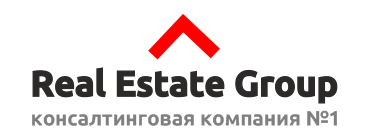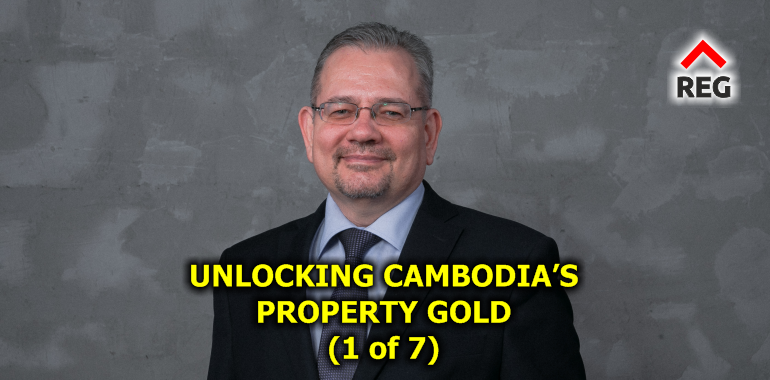YouTube
Podcasts
MAVE | Apple Podcasts | Spotify |Яндекс Музыка | VK | SoundStream | Deezer | Castbox | Overcast | Pocket Casts | Podcast Addict
Want to Buy Real Estate in Cambodia? Write a Request in WhatsApp and We Will Find the Best Options For You. Everyone Buys From Us!
Part 1. Kingdom of Cambodia.
Introduction:
Cambodia’s Urban Gems: The 5 Must-Buy Cities for Real Estate in 2024.
Where tradition meets modernity, Cambodia’s cities beckon with promises of vibrant living, rich culture, and investment potential. From the bustling capital to serene riverside towns, these seven cities offer a canvas for your dreams.
1. Phnom Penh: The Heartbeat of Progress.
Phnom Penh, the capital, pulses with energy. High - rise condos frame the skyline, while ancient temples whisper tales of resilience. Here, you’ll find luxury real estate - skyline views, riverside living, and a thriving expat community. Whether you’re a young professional or a retiree seeking adventure, Phnom Penh invites you to write your chapter in its ever-evolving story.
2. Siem Reap: Ancient Wonders and Modern Comforts.
Siem Reap, gateway to Angkor Wat, is more than a tourist hub. It’s a city of hidden courtyards, boutique hotels, and cultural immersion. Buy real estate here, and you’ll wake up to temple views - the past and present entwined.
3. Sihanoukville: Coastal Bliss.
Sihanoukville, with its sandy beaches and azure waters, beckons beach lovers. Luxury villas dot the coastline, promising sunsets and sea breezes. Whether you seek a holiday home or year-round living, Sihanoukville delivers.
4. Kampot: Riverside Bliss.
Kampot, nestled along the Preaek Tuek Chhu River, is a haven for nature lovers. Picture colonial-era houses, pepper plantations, and sunsets over the water. Buy property in Kampot, and you’ll find solace and inspiration.
5. Battambang: Artistic Enclave.
Battambang, Cambodia’s second - largest city, exudes creativity. Colonial architecture mingles with contemporary cafes. Here, artists find inspiration, and families discover a close-knit community. Invest in Battambang - a canvas for your passions.
So, whether you’re chasing investment returns, cultural immersion, or a place to call home, Cambodia’s cities await. Explore, invest, and live your Cambodian dream.
Chapter 1: About Cambodia.
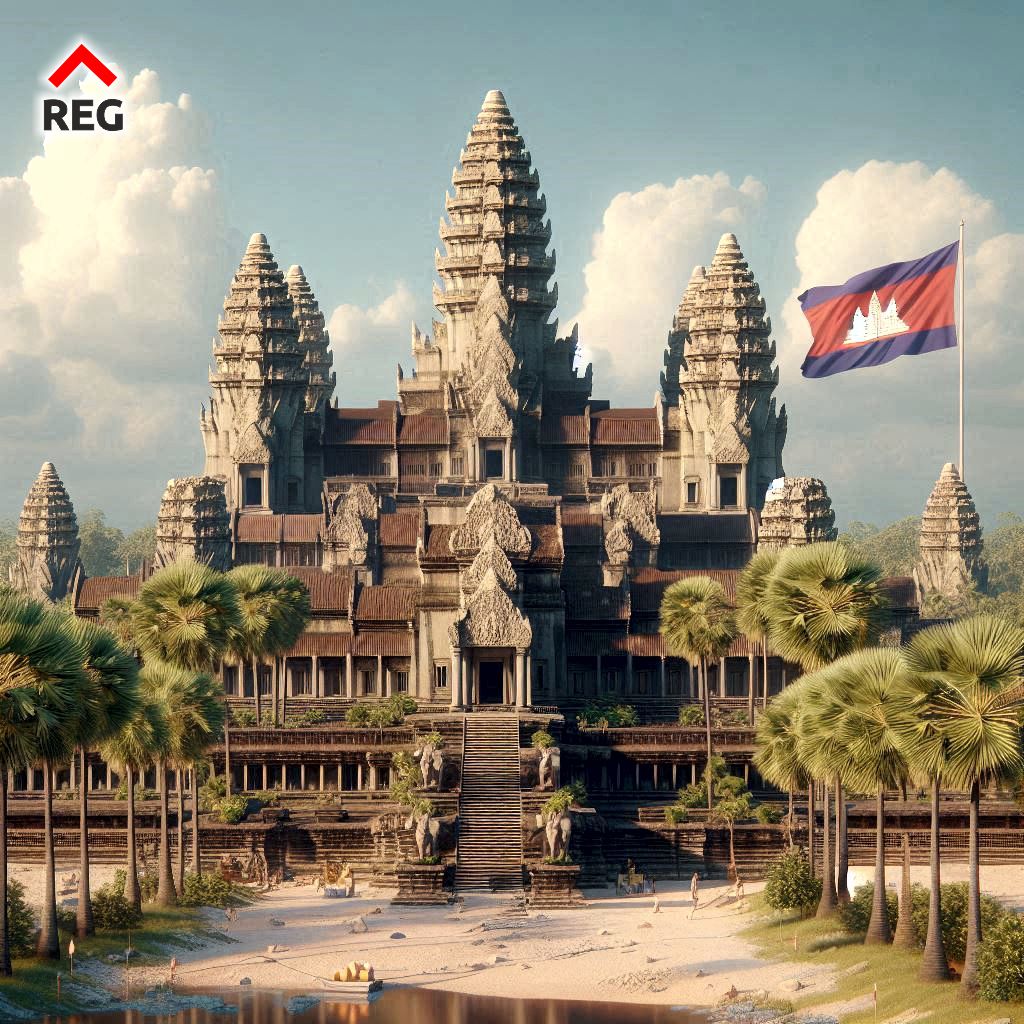
Real Estate Group offers an introduction to the fascinating aspects of Cambodia's geography and more:
1. Geography and Relief.
Land and Water Features:
- Cambodia, situated in mainland Southeast Asia, shares borders with Thailand, Laos, and Vietnam.
- The country covers approximately 181,035 square kilometers (69,898 square miles).
- Key features include:
- Central Plain: Encompasses the Tonlé Sap basin, the lower Mekong River floodplains, and the Bassac River plain.
- Mountain Ranges: Surround the central lowlands to the north, east, southwest, and south.
- Coastline: Extends 443 kilometers (275 miles) along the Gulf of Thailand, featuring mangrove marshes, sandy beaches, and headlands.
- Islands: Over 50 islands dot Cambodia’s territorial waters.
Highest Peak and Rivers:
- Phnom Aural: The country’s highest peak, reaching 1,810 meters (5,938 feet) above sea level.
- Mekong River: Cambodia’s longest river, spanning 486 kilometers (302 miles). It enters the country at Stung Treng province and significantly influences the seasonal nature of the Tonlé Sap lake.
2. Climate and Ecology.
Tropical Climate:
- Cambodia experiences a tropical monsoon climate.
- Wet Season: May to October, with heavy rainfall.
- Dry Season: November to April, characterized by cooler temperatures.
- Tonlé Sap Lake: Southeast Asia’s largest freshwater lake, expanding significantly during the wet season due to Mekong River inflow.
Rich Biodiversity:
- Cambodia’s diverse ecosystems include:
- Forests: Home to the largest contiguous and intact forests in mainland Southeast Asia.
- Wetlands: Vital for wildlife and water regulation.
- Mangroves: Along the coast, supporting unique flora and fauna.
3. Population, Languages, and Religion.
Population:
- Approximately 16.5 million people (as of 2019).
- Rapid urbanization is transforming Cambodia.
Languages:
- Khmer: Official language, spoken by 95.8% of the population.
- Minority Languages: Representing 2.9%.
- Other languages include Chinese and Vietnamese.
Religion:
- Theravada Buddhism: Predominant religion.
- Temples, pagodas, and religious festivals are integral to Cambodian culture.
Cambodia’s natural beauty, rich history, and vibrant culture make it an enticing destination for real estate investment.
Chapter 2: Cambodia's Economy.
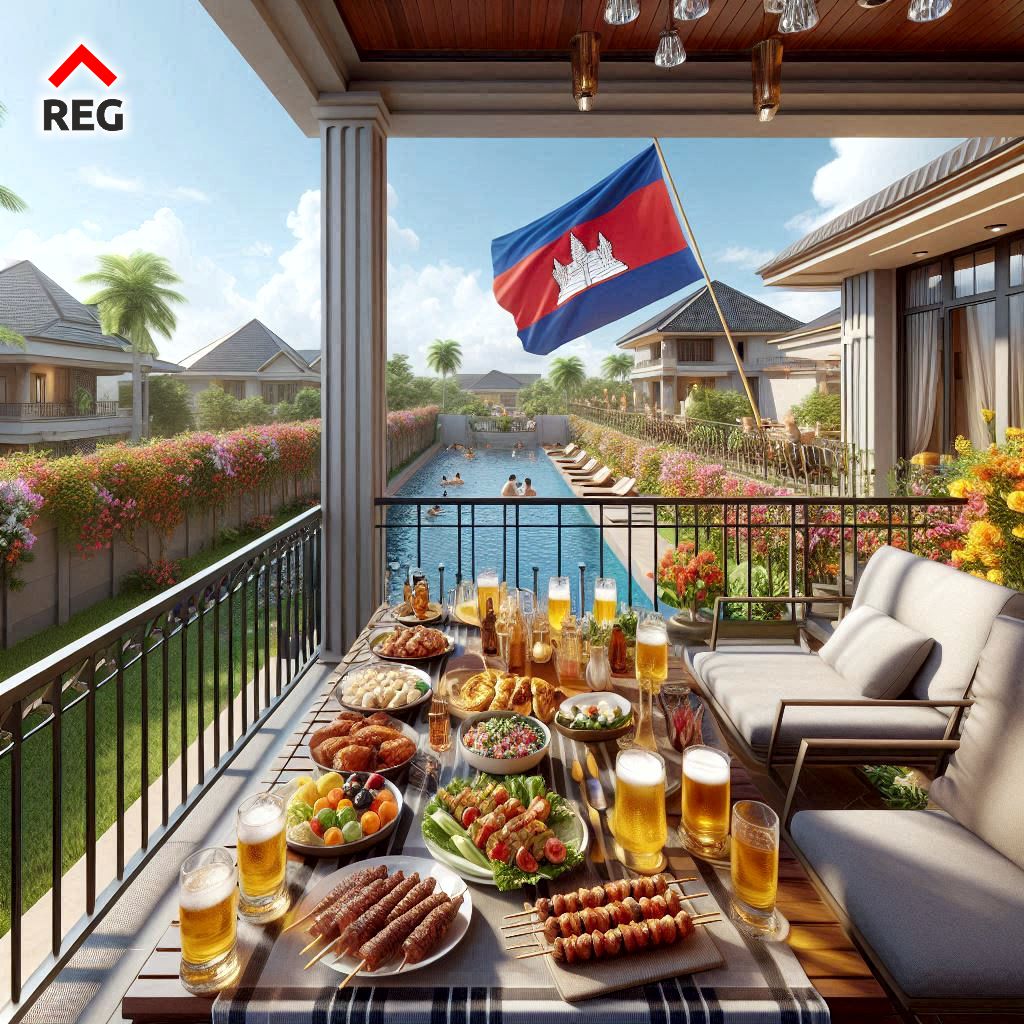
Real Estate Group offers to review detailed information about Cambodia's economy, major industries, special economic zones, trade partners, political stability, and its currency:
1. Economy as of 2024 and Forecast.
Cambodia’s economy has shown resilience despite challenges. Here are key points:
- GDP Growth: In 2022, Cambodia achieved a GDP growth rate of 5.2%. The manufacturing sector played a crucial role, contributing over 3% to real GDP. While agriculture faced difficulties due to weather and rising costs, the service sector rebounded strongly. Notably, electronics exports, particularly solar panels, offset the decline in garment exports.
- Inflation: After a period of decline, inflation rebounded to 3.9% in October 2022 due to higher food and fuel prices.
- Fiscal Improvements: Stronger-than-expected revenue performance led to improved fiscal positions in 2022.
- Economic Outlook: The economy is projected to grow by 5.3% in 2023, driven by a resurgence in tourism and robust non-garment exports. However, risks remain, including external factors like U.S. and China growth.
2. Major Industries and Special Economic Zones (SEZs):
- Manufacturing: Cambodia’s manufacturing sector has been a cornerstone of economic recovery. It includes garment production, electronics, and food processing.
- Tourism: The tourism industry is recovering, boosted by events like the 2023 South-East Asia Games.
- Agriculture: Despite challenges, agriculture remains significant, contributing to food security and employment.
- Special Economic Zones (SEZs): Cambodia has 54 SEZs, offering incentives for businesses, including income tax benefits. These zones attract investment in various sectors, such as logistics, manufacturing, and tourism.
3. Trade Partners:
- Exports: Major export partners include the United States, China, Japan, Canada, Germany, and the United Kingdom.
- Imports: Key import partners are China, Vietnam, Thailand, Singapore, Switzerland, and Indonesia. The U.S. dollar is widely accepted alongside the Cambodian riel.
4. Political Support and Stability:
- Current Political Landscape: The Cambodian People’s Party (CPP) has dominated politics for decades, with Prime Minister Hun Sen at the helm. The CPP has initiated a dynastic succession, leading to anti-democratic tendencies.
- Judiciary and Rule of Law: The judiciary is often exploited by the ruling party to enforce political interests.
- Challenges: While the Candlelight Party (CP) emerged as an opposition force, the overall political climate remains challenging.
5. Currency in Cambodia:
- Cambodian Riel (KHR): The official currency, introduced in 1980. It is divided into smaller units called “sen.”
- Unofficial Dollarization: The U.S. dollar is widely used, especially in urban areas and tourist spots. The exchange rate has been unofficially fixed at 4,100 KHR to 1 USD.
In summary, Cambodia’s economy shows promise, but challenges persist. The country’s diverse industries, SEZs, and trade partnerships contribute to its growth, while political dynamics continue to evolve.
Chapter 3: Foreign Investment in Cambodia.
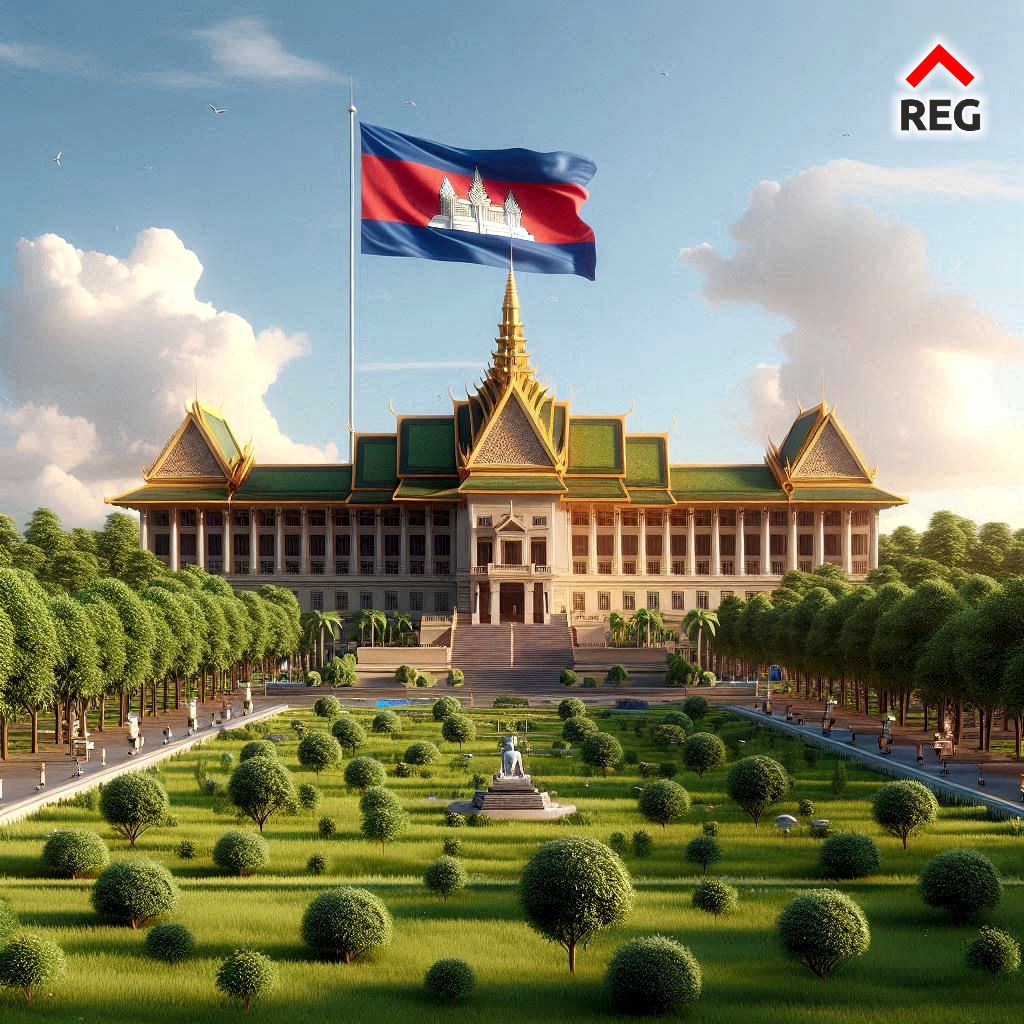
Real Estate Group offers a look at foreign investment trends in Cambodia over the past five years:
Foreign Direct Investment (FDI) in Cambodia.
Overview.
Foreign direct investment refers to direct investment equity flows in the reporting economy. It encompasses equity capital, reinvestment of earnings, and other capital. When a resident of one economy has control or significant influence over the management of an enterprise in another economy (typically owning 10% or more of ordinary shares), it constitutes a direct investment relationship.
Recent Trends (2019-2024).
2019: In 2019, Cambodia attracted $3.66 billion in FDI, marking a 14.02% increase from the previous year. This growth reflected investor confidence in the country’s business climate and opportunities.
2020: Despite global challenges, Cambodia maintained its appeal. FDI in 2020 reached $3.62 billion, representing a 1.05% decline from 2019. The pandemic impacted various sectors, but the government’s pro-business policies continued to attract investors.
2021: In 2021, FDI declined slightly to $3.48 billion, reflecting a 3.9% decrease. However, Cambodia remained resilient, with ongoing investments in manufacturing, services, and infrastructure.
2022: The upward trend resumed, with FDI reaching $3.58 billion in 2022 - a 2.74% increase from the previous year. Investor-friendly policies and improvements in business infrastructure contributed to this growth.
2023 and Beyond: Projections indicate continued expansion. Cambodia ranks first in the FDI Index for emerging markets in 2024, with a remarkable 393% growth. New projects are up by 110%, emphasizing the country’s attractiveness for investors.
Key Factors Driving FDI in Cambodia:
- Investor-Friendly Policies: The Cambodian government actively promotes foreign investment through incentives, tax breaks, and streamlined procedures.
- Manufacturing Sector: Chinese investors, in particular, have significantly contributed to FDI. Manufacturing accounts for over 30% of total capital inflows.
- Infrastructure Development: Ongoing improvements in transportation, energy, and logistics enhance Cambodia’s appeal.
- Strategic Location: Cambodia’s proximity to regional markets and access to the ASEAN Economic Community play a crucial role.
In summary, Cambodia’s FDI landscape reflects resilience, growth, and investor confidence. As the country continues to develop, it remains an exciting destination for those seeking investment opportunities.
Chapter 4. Cambodia Visas.
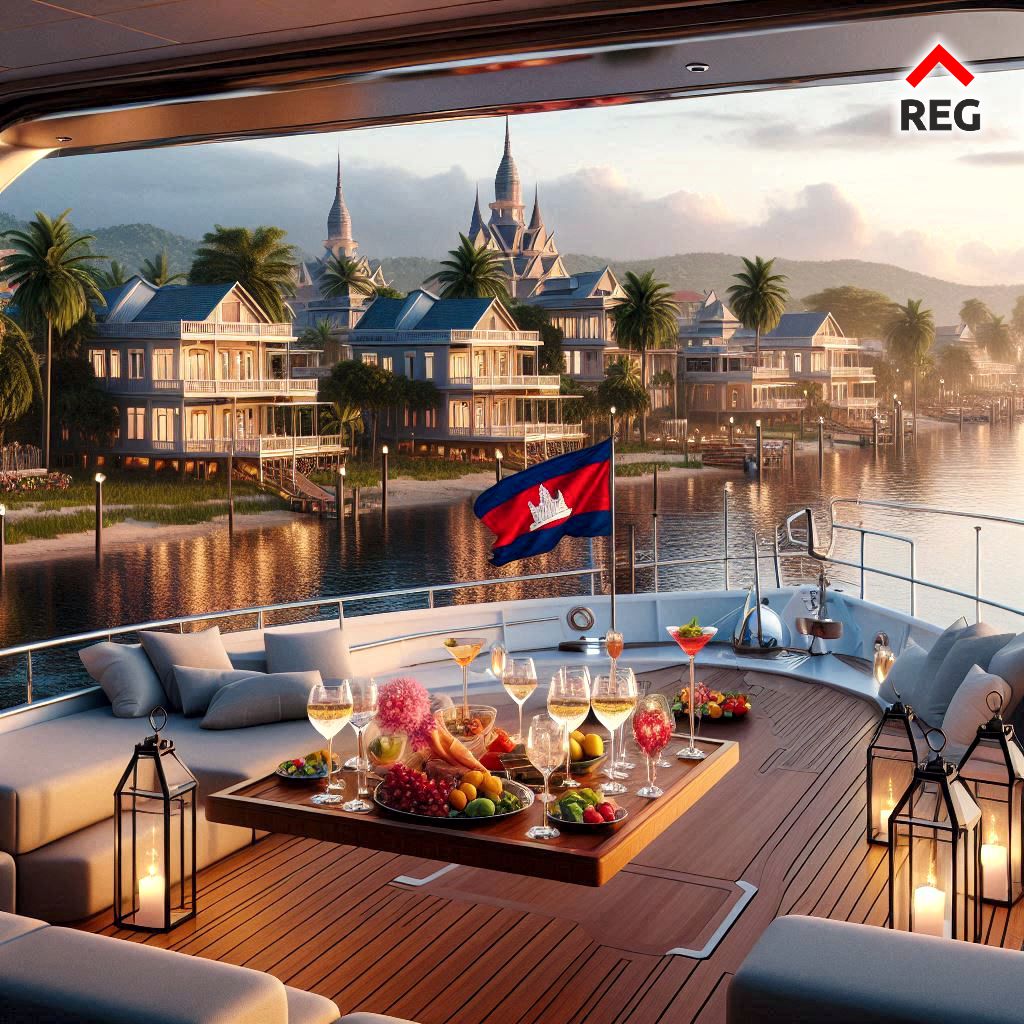
Real Estate Group offers insight into the intricacies of obtaining visas in Cambodia, including long-term options, investor visas, and residence permits for real estate buyers:
1. Understanding the Types of Long-Term Visas in Cambodia.
Tourist Visa:
- Allows a 30-day stay and can be extended once for an additional 30 days.
- Available on arrival at the airport or border.
- Cost: Around $35 initially, and extension fees range from $40 to $50 through an agent.
Ordinary Visa:
- Ideal for extended stays due to employment, retirement, volunteering, or studying.
- Can be extended for 1 month, 3 months, 6 months, or 12 months.
- Flexibility: Extend for 6 or 12 months without reapplying for a visa.
- To obtain the Ordinary Visa, make it clear on arrival that you intend to stay for at least 3 months.
2. Step-by-Step Process for Acquiring a Long-Term “E” Visa.
Initial Entry with Ordinary Visa
- Obtain an Ordinary Visa: Enter Cambodia on an Ordinary Visa, which you can easily purchase upon arrival. This visa is initially valid for 30 days and can be extended.
Choose the Right Extension.
- Select the Extension Type:
- EB (Business Visa): Available for 1, 3, 6, or 12 months. Requires a stamped letter of employment.
- ES (Student Visa): Accompanied by proof of registration at a Cambodian school.
- ER (Retirement Visa): Requires documentation proving retirement in your home country and sufficient resources to support yourself.
- EG (Looking for Work Visa): Available for 1, 3, or 6 months but is not renewable. Extending it requires an EB visa.
- Costs Involved:
- Extending for 6 to 12 months typically costs between $180 to $300 USD, depending on the desired length.
3. Investor Visas and Residence Permits.
Investor Visas:
- Cambodia does not have a specific investor visa category.
- However, investors can use the EB (Business Visa) for long-term stays.
- Accompany the EB visa with a stamped letter of employment or a work permit (obtainable through an agent for around $180-$200).
Residence Permits for Real Estate Buyers:
- Cambodia does not offer a direct residence permit solely based on real estate investment.
- However, owning property in Cambodia can facilitate your long-term stay.
- Consider the Ordinary Visa extension options mentioned earlier.
In summary, Cambodia provides flexible visa options for long-term stays, including investor-friendly extensions. Whether you’re exploring business opportunities or seeking a peaceful retirement, Cambodia welcomes you!
Chapter 5: Tourism in Cambodia.
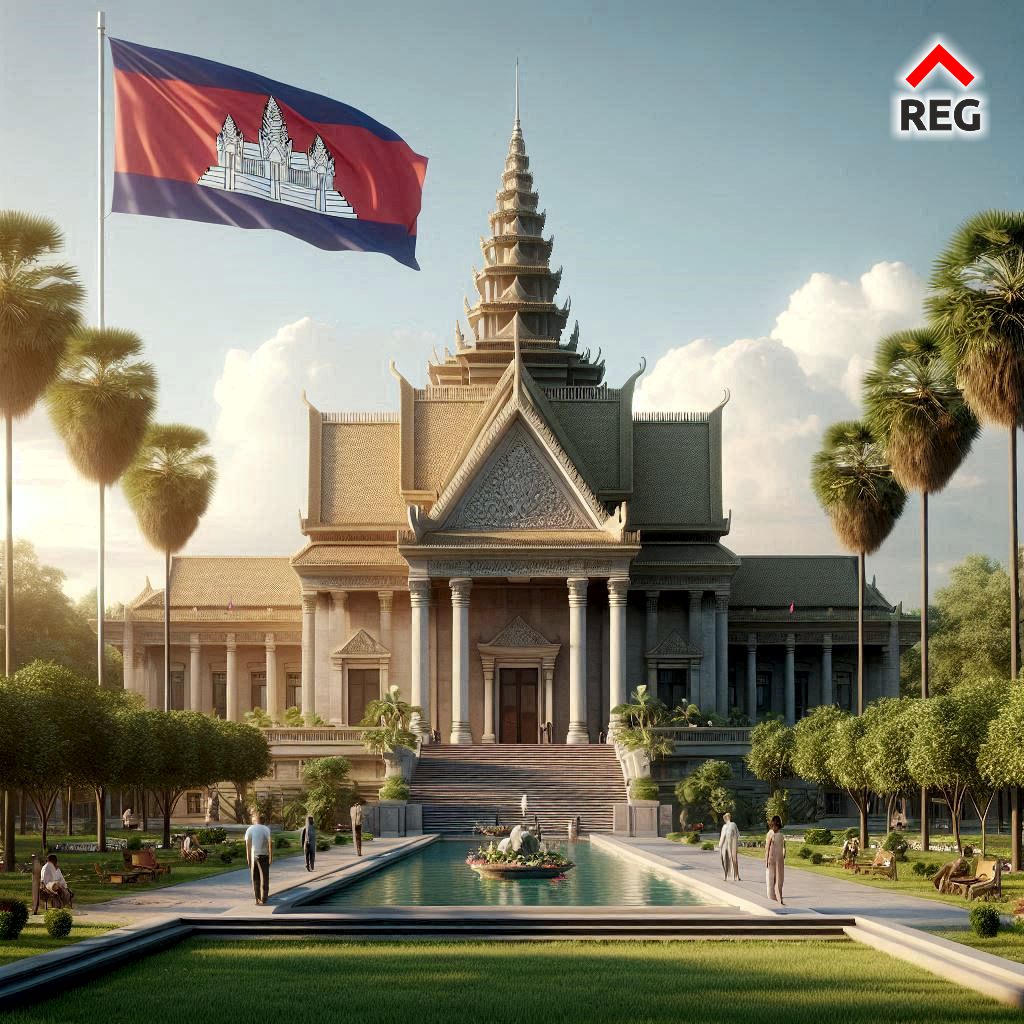
Real Estate Group proposes to study the tourism trends in Cambodia from 2019 to 2024. The Kingdom of Cambodia has witnessed significant shifts in international tourist arrivals, average length of stays, hotel occupancy rates, and tourism receipts during this period:
1. International Tourist Arrivals:
- 2019: Cambodia welcomed 6,610,592 international tourists.
- 2020: Due to the pandemic, arrivals dropped significantly to 1,306,143. However, from April to December 2020, there was a slight recovery with arrivals reaching 30.0% compared to the same period in 2019.
- 2021: The recovery continued with 196,495 arrivals, an 85.0% decrease from 2020.
- 2022: A remarkable rebound occurred, with 2,276,626 arrivals, indicating a 1058.6% surge.
- 2023: The trend intensified, reaching 5,453,231 arrivals, a staggering 139.5% increase.
- 2024 (Projected): The positive trajectory continues, with an estimated 5,000,000+ arrivals expected.
2. Average Length of Stays and Hotel Occupancy:
- Average Length of Stays:
- In 2023, tourists stayed an average of 7.6 days in Cambodia.
- Hotel Occupancy:
- In 2023, hotel occupancy stood at 76.5%, reflecting the growing appeal of Cambodia as a tourist destination.
3. Top Tourist Markets:
The following countries contributed significantly to Cambodia’s tourism:
- Thailand: Remained a strong source market.
- Vietnam: Showed consistent growth.
- China (RPC): A major contributor.
- Lao PDR: Steady arrivals.
- Korea (ROK): Increasing interest.
- U.S.A. and France: Continued to send tourists.
- Indonesia, U.K., and Australia: Also played significant roles.
4. Outbound Tourism:
Want to Buy Real Estate in Cambodia? Write a Request in WhatsApp and We Will Find the Best Options For You. Everyone Buys From Us!
- Cambodians themselves have become avid travelers:
- 2019: 156,127 Cambodians departed for international destinations.
- 2022: Despite pandemic challenges, 11,564 Cambodians traveled abroad.
- 2023: Outbound travel rebounded to 135,704.
- 2024 (Projected): Expected to reach 153,329 outbound travelers.
Cambodia’s resilience and recovery in the tourism sector demonstrate its allure as a captivating destination. Whether exploring ancient temples, pristine beaches, or vibrant cities, visitors find a rich tapestry of experiences awaiting them in the Kingdom of Cambodia!
